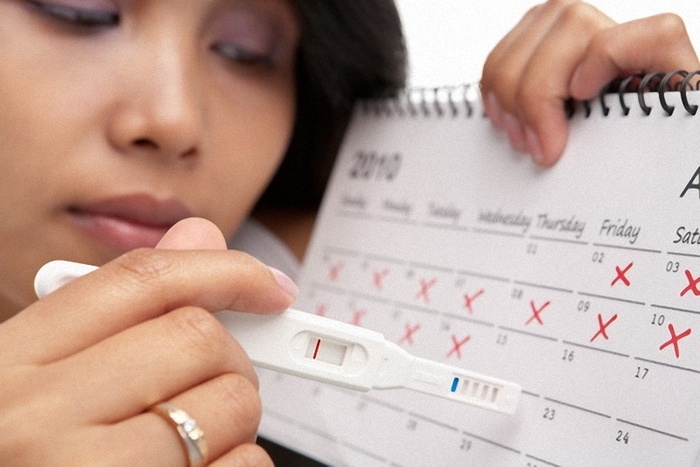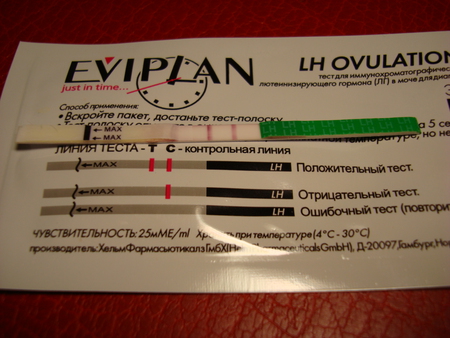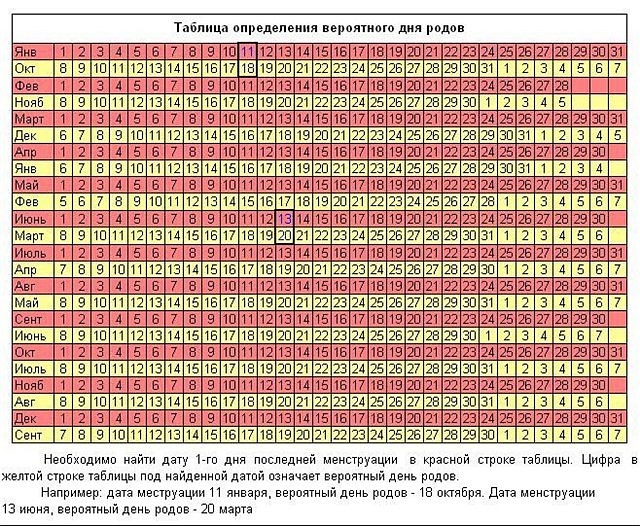Once for every expectant mother comes the very special day. She finds out about her new condition. And soon the woman will often hear the question: “What is your (your) term?” How to calculate the gestational age to answer correctly?

It is pretty simple!
Almost always, the answer to the question about the gestational age will be based on two of the most famous and popular methods of counting - obstetric and embryonic (from conception) terms
Obstetric period
The beginning of pregnancy is the first day of the last menstruation. This method is called obstetric. It does not take into account the individual characteristics of the woman’s body, but is almost universal. Any doctor will use it.
The obstetric method has its own logic. The calculation of the period comes from the earliest stage of pregnancy - the beginning of egg maturation.
According to the obstetric method, the doctor will determine the estimated date of birth (DA), as well as the maternity leave period. In medicine, it is generally accepted that a pregnancy lasts 280 days. These are all known 40 weeks or 10 lunar months.
Why 10 months, not 9? And why are the months lunar? “Guilty” of this astronomy. The moon repeats its phases with a frequency of 28 days (4 weeks). This is the lunar month. And if you count in the calendar months, then in a normal pregnancy they really fit only 9.
Fetal (true) term - from conception
The beginning of pregnancy is the first day of the last menstruation plus 2 weeks. It is believed that it is in the middle of the cycle that ovulation occurs. At the same time, the period from one month to another is taken as an average - 28 days.
This method of calculating the term is called embryonic or true. But it’s worth considering: is not the truth hiding somewhere else? From a medical point of view, ovulation can occur within 12-18 days from the start of the cycle.
Example. Oksana’s husband constantly went on business trips from the beginning of spring to late autumn. Sometimes there was only one or two days at home in a month. Soon after her husband’s next visit, Oksana realized that she was pregnant. And with a smile she thought she knew the exact date of conception - June 2. After all, before and after this day, she and her husband had not seen each other for almost two weeks. The last menstruation at Oksana was May 18-21. And if we consider May 22 as the beginning of the cycle, then the conception took place on the twelfth day. And the egg was already ripe. Or not?
Another question is important here - how long does ovulation last? If strictly according to science, then a few seconds. Indeed, ovulation is only the exit of a mature egg from the follicle. But most of us consider ovulation the next several (or even many) hours that the egg will live in the female body. How many? Sometimes up to two days.By the way, about the same amount of sperm will live in the female body after intercourse. And sometimes longer - up to a week.
So the true day of conception is a real secret! After all, there may well be two different situations. The egg moves to the uterus for the second day and literally at the end of its life is fertilized. Or vice versa. Sperm entered the woman’s body before ovulation and actually “waited” for the release of the egg.
As accurately as possible, the day of conception is known to couples who carefully planned pregnancy. In this case, the day of ovulation is determined using a special test (sold at the pharmacy) or by ultrasound.

There is another old method for determining ovulation. This is a measurement of basal temperature. It is carried out in the morning, at the same time, before getting out of bed (even eyes are recommended not to open). The thermometer is placed in the oral cavity, vagina or rectum. Before ovulation, the basal temperature drops slightly, and then increases. This means the release of a mature egg.
And sometimes women themselves feel that ovulation has come. The lower abdomen aches, vaginal discharge becomes a little more viscous. And the attraction to the beloved man is becoming stronger.
That is why many expectant mothers consider their gestation period to be the embryonic method: the beginning of the cycle plus 2 weeks or the day of ovulation known to them. In this case, we are talking about the period from conception.
Could there be difficulties?
In Lyudmila, menstruation often came literally “every other time”. The doctor’s verdict is ovarian dysfunction. While Luda did not live sexually, she was not too worried. But after marriage, the same question often came up. Is delay a manifestation of dysfunction? Or did contraception not work? Once the second option turned out to be true. But the doctors could not calculate the time using the usual method - there was a clear discrepancy.
***
For the former athlete Valeria, the first menstruation came only at 16 years old. And the cycle was not installed at all. Between critical days, it could take up to six months. The girl did not go to the doctor. I somehow didn’t find time — either study, or personal life. Once thin Valeria noticed that she had clearly recovered. The first reaction is the desire to go on a strict diet and remember about previous sports loads. It is good that at first the girl consulted her mother. More precisely, with the future grandmother of her child.
***
The first-born of Lena has just turned ten months old. The baby grew up healthy, and the nursing mother, on the occasion of such a round date, decided to enjoy the melon. A few hours after that, she was sick. Lena thought she was poisoned. But soon the doctors clarified the situation: Lena was pregnant again. The first menstruation after delivery simply did not have time to begin.
How many similar cases! If a woman’s periods go irregularly or do not have time to arrive at all, as in the situation with Lena, traditional calculations will not help. It’s good that there are alternative methods.
How else to determine the term?
If the obstetric period is not calculated in any way, doctors will use other methods of calculation. There are several of them:
- based on a gynecological examination;
- using ultrasound;
- on the first stirring of the fetus;
- the size of the uterus.
In some cases, the doctor “looks after” all the signs in order to make less mistakes in calculating the term.
Gynecological examination
An experienced gynecologist will be able to calculate the correct time only by the size of the uterus. The doctor’s hands will precisely determine the boundaries of the uterine cavity. If the uterus is comparable in size to a chicken egg, the term is 4 weeks. And if closer to the goose, then we are talking about eight weeks.
This method works effectively if the gestational age is less than 12 weeks.
Ultrasound scan
Ultrasound scanning today allows you to effectively examine the fetus and even take some measurements. In the first trimester, the doctor will determine the size of the fetal egg and compare them with traditional data. In the second and third, the doctor will measure the circumference of the chest, abdomen or head. The last “measure” is considered the most correct for determining the term.
In the first weeks of pregnancy, calculating the term in this way gives a very accurate result.Later, future babies begin to differ greatly: some are larger, others are smaller. Just like in the life that awaits them in the future.
Baby is pushing!
The first movement of the fetus is another indicator. If a woman is preparing to give birth to her first child, she will feel his movements at 20 weeks. If the baby is the second, third and so on, then the first stirring is expected at 18 weeks. This is official medical data. And future kids do not at all believe that they must follow them!
Truly, the fetus makes its first movements in the first trimester of pregnancy. But the unborn child is still so tiny that her mother does not feel anything for many weeks. But there are exceptions.
Inna was expecting a second child. And so she was thin, and in the first weeks she still lost weight. With a growth of 167 cm - 46 kg. And this is in the second trimester! The doctor shook her head disapprovingly and was worried. And Inna felt great. Nausea almost did not torment, vomiting was rare. True, he always wanted oranges, and one red-haired “handsome” always lay in his bag. In general, there were no problems.
The kid hustled in the seventeenth week. First, once, and after a couple of hours - one more time. And the next day, and every other day, the woman experienced the same sensations. At the next appointment with the gynecologist, Inna announced the date. The doctor shook her head for the umpteenth time, smiled and clarified - maybe these were gases? Inna laughed - she perfectly remembered the baby’s movements from the first pregnancy and could not be mistaken.
True, sometimes it can still be confused. If the expectant mother regularly suffers from flatulence, and even the baby is waiting for the first time, the movement of gas through the intestines is sometimes taken by her for moving the baby.
When weeks are centimeters
And another way that is related to the size of the uterus. More precisely, with its height. This method is available only to doctors. The pregnant woman lays down on a couch. The doctor takes a centimeter tape or a special instrument - a tazomer. Determines the upper and lower borders of the uterine cavity and makes measurements.
The height of the uterus in centimeters is the gestational age. That is, if the doctor measures 30 cm, then the gestational age is 30 weeks.
These four methods (usually in combination with each other) give the most accurate determination of the gestational age.
And when will it be born?
The estimated date of birth will tell mom when the baby will be born. But this is a theory. Children rarely follow the calculations of doctors. True, there are exceptions here.
On ultrasound at 12 weeks, Lika was called PDR - March 10. Lika only shrugged slightly. She carried her first baby for exactly a week. Doctors then said that the baby probably wants to grow up. And indeed, even a born-over son, at birth weighed only 2 kg 700 g.
Therefore, early in the morning on March 10, Lika did not even immediately realize that the fights had begun, and persistently tried to sleep a little more. But it didn’t work out. Soon it became clear - it began. And so the daughter was born - exactly on time.
Negele formula:
Quite accurately, the expectant mother can calculate the DA itself. Of course, if the periods before conception were regular.
- It is necessary to add another seven days to the first day of the last menstruation, and then take three months.
- Or add 9 months and 7 days to the first day of the last menstruation.
That's the approximate date of birth of the future crumbs!
You can find out about the DA by using the special pregnancy calendar for the last month. In the red line we look for the date of the beginning of the last menstruation, next to it, in the yellow line, we see the date of the probable day of childbirth.

For example, the last menstruation began on January 28th. Plus seven days is February 4th. Less three months - we get November 4th. And how it will actually be - life will show.









Yes, there are many methods for calculating and determining the date of birth, but none of these methods is accurate, since only the baby knows when he wants to be born, and everything else is just guesswork and rough guidelines.
When I was pregnant, the more accurate calculation of the term was by the embryonic type. But then the doctors correctly assigned me the date of delivery - August 7th. The baby was born on August 7, 23:45. I managed it!
During pregnancy, I completely did not understand these calculations. The last menstruation was 11/05/2013, according to doctors' estimates, PDD approximately fell on August 12, 2014. According to the ultrasound, the date was August 11. But pregnancy could not come at the time of menstruation ... And then I was completely confused, decided to rely on the will of fate and my inner feelings. The birth began on August 2! It was 37-38 weeks. The date absolutely did not coincide with the DA, but I still knew in the afternoon that today everything would begin, my foreboding did not disappoint. Therefore, I believe that mummies need to calm down and not engage in all kinds of accurate calculations and constant running around on an ultrasound scan. Let the baby be born when he is ready!
I always follow my cycle well, so I knew exactly what day, plus or minus 2-3 days, I had a pregnancy. Yes, and I began to feel like something else.
I generally had no idea when it happened and therefore counted on the professionalism of the doctors. The deadline was determined correctly. I gave birth in due time.
My doctor also correctly set the gestational age. Moreover, her data completely coincided with my own calculations. So it seems to me that mistakes by doctors rarely occur.
How to determine the gestational age if, after childbirth, menstruation did not begin? The baby is 10 months old, stopped breastfeeding at 6 months. To the doctor is not soon (((
Already for almost 2 weeks in the evenings the temperature has been 36.9 - 37.2 without any symptoms of a cold. Pain in the chest area, but not severe, there is nausea, a feeling of bloating, for almost 2 weeks now I have been eating everything. From time to time it throws it into heat or cold, up to menstruation for 2-3 days, but such symptoms are the first time. A week ago, the lower abdomen and the right side were sick and pricked. Is there a chance of pregnancy? (did 2 tests were negative) Who had this?